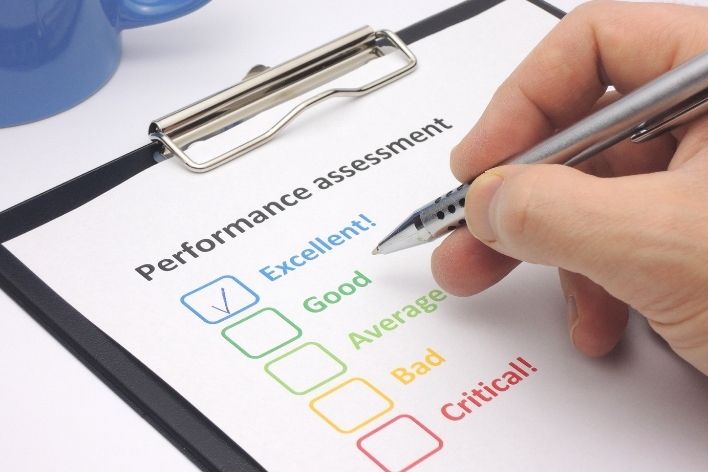How to Use Data Analytics to Track and Improve Student Performance?

Data is everywhere today! We create lots of information whether it is by playing games, watching videos, or studying. Have you ever thought about how this data will be used to improve the overall performance of students? In this blog, we are going to discuss how data for students can help improve the overall performances of students by making learning a fun and effective process. Let's get started!
What is Data Analytics?
Before we discuss all of how data can benefit students, let's learn what data analytics means. Data analytics is pulling, analyzing, or examining data to find insights and patterns. Think of being a detective! Just as a detective uses clues to unravel a mystery, a data analyst uses information to know what is going on and how to make things better.
Data Basics
Data refers to pieces of information that could be collected and analyzed. In education, this can be as simple as quantitative data consisting of numbers like test scores, grades, and attendance rates.
Quantitative data: This is the numerical data. Examples are test scores, grades, and rate of attendance. It is measurable and tracks performance over time.
Qualitative data: On the other hand, it refers to data that cannot be numerically expressed including student feedback, observations by teachers, and contribution to class discussions. It adds dimensions and depth to the quantitative data.
Why Is Data Important for Students?
This will be able to give us insight into our strengths and weaknesses. Even data could tell what subjects you are at your top regarding what areas might need more attention. For instance, if you score high in math but reading is low, then this is a very important understanding.
Personalized Learning: Everybody learns differently. Data for students informs a teacher to prepare personalized learning plans according to the individual needs of each student. For example, if there are some math concepts in which you need extra practice, your teacher can tailor specific resources and practice in those areas.
Setting Goals: Analysis of data gives a student practical and achievable goals that he or she has to work towards. It thus gives you a clear target vision, hence making your learning even more focused.
Track Progress: Once you have data for students, you can see how you're improving over time which can be super motivating! It's fulfilling to see how hard your work is paying off as your grades begin to rise.
How to Use Data for Students
1. Collecting Data
The first step to implementing data analytics is collecting data. For students, the data can come in from many areas:
Grades: The grades you score on tests, quizzes, and assignments are some critical points of data.
Attendance: How often you are in class, that influences learning can be followed.
Engagement: Participation in class discussions and activities may also indicate the level and interest one has in certain subjects
These form a student performance dataset, which makes it easier for teachers to understand how you're faring. Such collection of data on students is incredibly vital for tracking the progress of a student.
2. Data Analysis
Once you have that data, then look for patterns of school processes. This gets really magical! Here are a few of the common ways you can start to analyze student data:
Visualizations: Charts and graphs allow you to visibly see into the depths of those trends. For example, if you plot your grades over time, you could see how math scores would rise while science scores dropped. Visual tools help you make sense out of complicated data.
Comparison: Comparing your work with the class averages can give you some idea of where you stand. If the class averages are significantly higher in some areas, it might suggest the area could be tough and you need more help.
3. Establishing Objectives
Now that you have taken a look at your data, it's time to start setting objectives. In the following you can find out how:
First, if your data demonstrates that you struggle in a particular area, that is your first place to work. You have to know where you need to improve.
Be Specific: Instead of declaring "I want to get better at math," declare something like "I want to raise my algebra score by 10% on the next test.".
Follow Your Patterns: Check your data every so often to see if you are on a path to attaining your goals. Use small successes to stay on track!
4. Differentiated Instruction
Using what you know about your learning as a student, teachers can craft differentiated learning for you:
Tailored Lessons: Instruction set in ways that target certain skills or concepts. For example, if you are a poor reader, an instructor will provide more access to resources and opportunities for practice specifically of reading, all at your own pace.
Adaptive Learning Tools: There are numerous more educational apps, and just think of all the data used for the student to adapt to the learning pace of a particular student.
If you are excelling, these tools will give you ample more challenging material! Even tools like adaptive quizzes and personalized learning platforms adjust according to your performance.
5. Predictions Through Machine Learning
Now let's talk about something cool. Let's take, for example, student performance prediction using machine learning. Now, machine learning is this type of artificial intelligence that can scan an enormous amount of data, and predict patterns based on it. This is how it works:
Data Input: The machine learning algorithms can sum together multiple data points, including previous grades, attendance, and participation levels. For example, a student who fails to report to class can have the system flag a particular student for extra attention.
Outcome Forecast: An algorithm will analyze data to predict how well a student will do in the future. Assume it observes that with data, students who had similar data performed poorly in a certain subject; this could make the algorithm mark that subject for extra help. This would ensure that children do not fall behind.
6. Parents and Guardians Involvement
Data does not only help the students but also the teachers in expressing performance to the parents and guardians of their students. Publicizing data relating to a student's performance can further collaborate in helping him:
Regular Periodic Progress Reports: By using student data, schools can interact with parents on their children's progress, thus making it easier for parents to understand how they can support their children. Examples of the kind of reports that can be sent to parents for tracking through regular progress might include, for instance: monthly reports showing relative strengths and weaknesses.
Collaborative Goals: Parents and teachers may set goals together, using data as their guiding tool in their discussion. It would make everybody on the same wavelength and work for the same purpose.
7. Feedback and Reflection
Lastly, through the use of data for students, continuous feedback and reflection are allowed. Here's how to maximize it:
Regular Review of the Data: Decide to meet with a teacher or mentor at scheduled, regular times to review your data. Discuss what's going well and what needs to be changed. It can be a great opportunity to adjust your goals based on your progress.
Reflect on Learning: Stop and think about what the data is showing you. Is learning happening for you? What can you do differently? Reflection improves critical thinking and makes you a lifelong learner.

Extra Resources: Datasets for Students
If you are ready to get started with data analytics, don't worry because you have datasets for students everywhere you turn. Here are a few that you might find useful:
Kaggle: This also has a lot of datasets that can be related to education. It accommodates datasets that relate to the performance as well as demographics of students.
UCI Machine Learning Repository: Another source that can come in handy for students is the UCI Machine Learning Repository. The website carries academic datasets for students. Data about different aspects of student performance is available here and can be used in practice by analysis.
Local School Districts: Some local school districts publish anonymous student performance data for research or educational use. Check with your school or district to determine if anything like this is available.
The Future of Data in Education
Data is only going to be used and become an even larger piece of education as technology continues on its path. Envision a future where:
Each learner experiences learning in a much more tailored experience, specifically in an environment that is tailored just for them, making education both more engaging and more effective.
This means that teachers can predict which students might need extra help even before they struggle, so early interventions make all the difference.
Data for students is used in schools in such a way that schools can present interesting environments that foster creativity and innovation to encourage them to find an interest and a passion.
Conclusion
Using data for students is an exciting way to track and improve the performance of students. Use gathering, analyzing data, setting goals, and using technology such as machine learning to have students take control over their learning process. Remember, data is a potent tool when used appropriately. It may lead to better results for each individual participating in the education process. So, do not fear to use data, stay curious, and your performance will shoot through the roof!
FAQs
How does the analysis of data improve the students' performance?
Data can help tell between those things that a student is good at and those that he or she is weak in. Such can eventually make for learning processes that strengthen the student's performance.
What role does it play in improving performance?
Data analytics generates trends and insights in knowledge structures that enhance the instructor to form sound judgments on how they can approach teaching strategies and interventions.
How does data improve tracking students' progress?
Collecting and analyzing test scores, attendance, and participation form a cycle of continuous checking and assessment of the student's progress in their learning and performance.
How does data analysis help students?
Data analysis offers the student feedback on his/her performance hence improving their way of life through goal setting and decision making in their learning paths.
Discover more exciting ways to make learning fun—explore our site for engaging resources and activities today!
Related Blogs
Importance of Self-Directed Learning: Get to know about the importance of Self Directed Learning through our latest blogs.
How to Develop Critical Thinking Skills: Learn about developing critical thinking skills through our latest blog.
Other Related Sections
NCERT Solutions | Sample Papers | CBSE SYLLABUS| Calculators | Converters | Stories For Kids | Poems for kids| Learning Concepts I Practice Worksheets I Formulas | Blogs
Admissions Open for
CBSE Schools In Popular Cities
- CBSE Schools in Bangalore
- CBSE Schools in Mumbai
- CBSE Schools in Pune
- CBSE Schools in Hyderabad
- CBSE Schools in Chennai
- CBSE Schools in Gurgaon
- CBSE Schools in Kolkata
- CBSE Schools in Indore
- CBSE Schools in Sonipat
- CBSE Schools in Delhi
- CBSE Schools in Rohtak
- CBSE Schools in Bhopal
- CBSE Schools in Aurangabad
- CBSE Schools in Jabalpur
- CBSE Schools in Jaipur
- CBSE Schools in Jodhpur
- CBSE Schools in Nagpur
- CBSE Schools in Ahmednagar
- CBSE School In Tumkur











